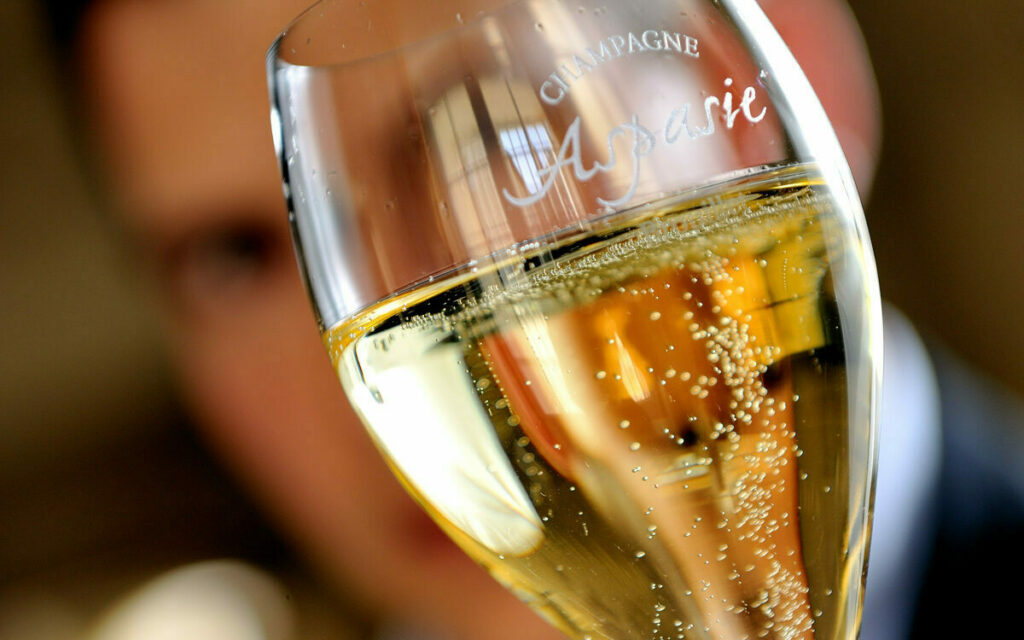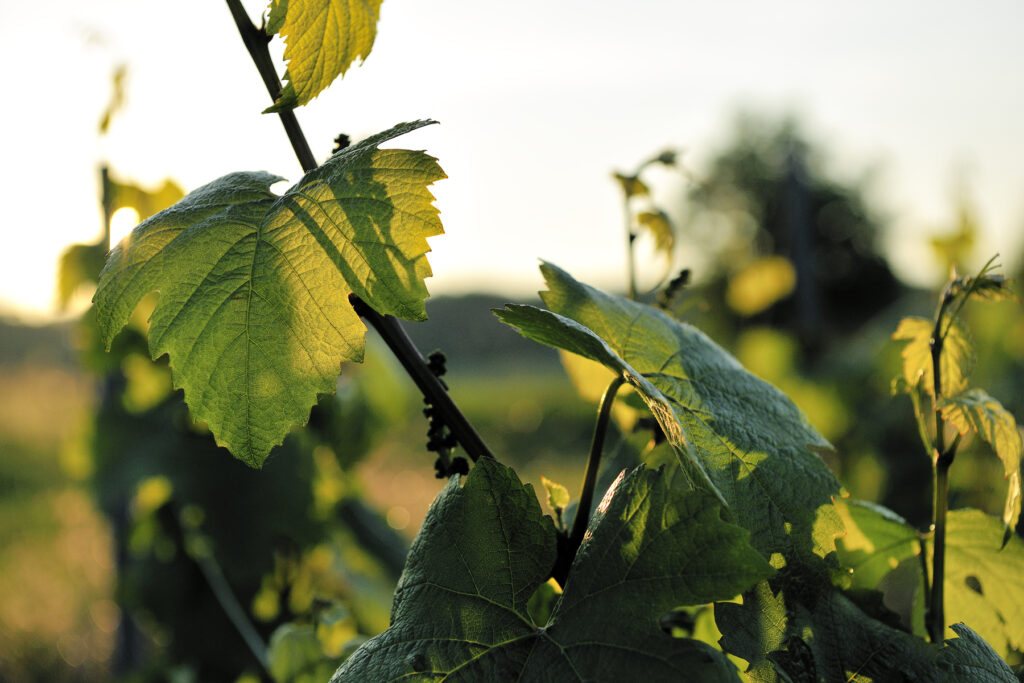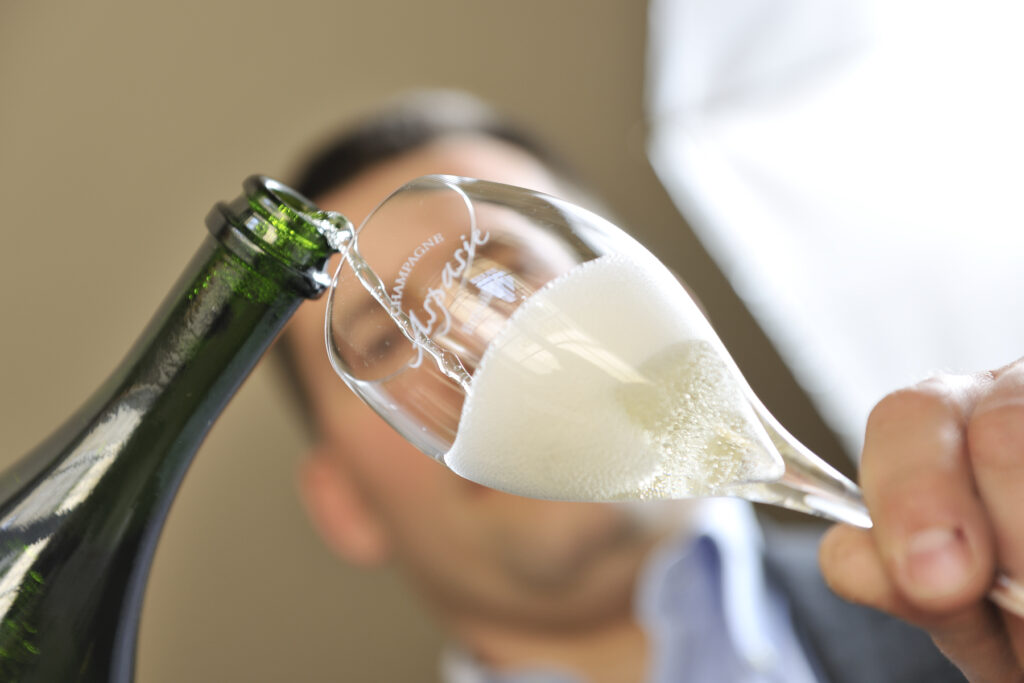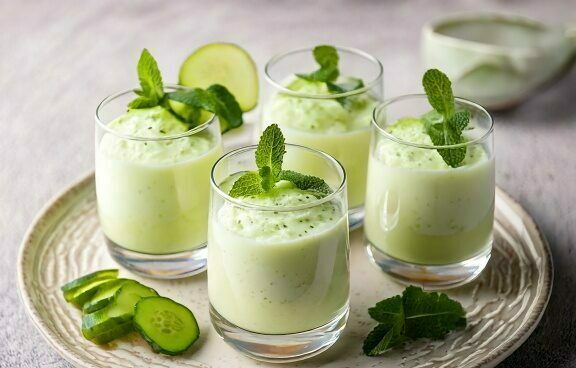The Importance of Champagne Tasting: Rituals, Proper Glassware, and Serving Temperature

Tasting champagne is not just a simple act; it is a true ritual that allows one to fully appreciate its aromatic complexity, texture, and effervescence. To reveal all the subtleties of a cuvée, it is essential to follow certain rules: the choice of glass, serving temperature, and tasting method directly influence the perception of flavors.
Tasting Rituals: A Sensory Journey
Even before the first sip, the tasting experience begins with observation. The champagne’s color and the finesse of its bubbles are key indicators of its quality and aging process. Next, the nose plays a crucial role: depending on the grape variety and type of champagne, it reveals fruity, floral, spicy, or pastry notes. Finally, on the palate, the balance between freshness, liveliness, and aromatic length creates a unique gustatory experience.
Taking the time to savor each sip allows you to fully appreciate its richness. Swirling the champagne in the mouth reveals its structure and complexity, while the effervescence adds a refreshing and airy sensation.
Which Glass to Choose for the Best Tasting Experience?
The choice of glass is essential for a successful tasting, as it influences the concentration of aromas and the expression of bubbles.
- Wide Coupe: Historically used, it quickly disperses both aromas and effervescence, altering the sensory experience.
- Champagne Flute: Preserves the bubbles well but limits aroma expression due to its narrow opening.
- Tulip Glass or White Wine Glass: Ideal for tasting, allowing aromas to fully develop while maintaining freshness and effervescence.
A glass with a slightly flared rim enhances aroma release, offering a more refined tasting experience.

The Ideal Serving Temperature for Each Champagne
Temperature plays a key role in the perception of aromas and texture. If served too cold, champagne’s aromas are muted, and the bubbles lose intensity; if too warm, it loses finesse and freshness.
- Classic Brut Champagne: 8 to 10°C, for a balanced expression of aromas and lively character.
- Vintage or Prestige Cuvée: 10 to 12°C, to reveal its full complexity and aromatic depth.
- Rosé Champagne: 9 to 10°C, to preserve its fruity character and elegance.
To achieve the ideal temperature, place the bottle in an ice bucket filled with water and ice for 20 to 30 minutes. Avoid using the freezer, as it can alter the champagne’s structure.
Enjoy Champagne in the Best Conditions
Following these tasting guidelines enhances the winemakers’ craftsmanship and allows for the full appreciation of every bottle. At Champagne Aspasie, each cuvée is crafted with meticulous care to achieve the perfect balance of finesse, freshness, and aromatic complexity.
Tasting is an art, where every detail matters in elevating the experience. Choosing the right glass, serving at the optimal temperature, and savoring each sip bring out the richness of an exceptional champagne.
Discover our cuvées and experience the perfect tasting journey.
Also read

Champagne Aspasie and Sustainable Development: A Commitment to Ecological Excellence
Since 1794, Maison Aspasie has embodied the heritage and passion of Champagne viticulture…

Champagne: Elevating Life’s Celebrations, Big and Small
Bien plus qu’un vin de fête, le champagne sublime les moments simples comme les grandes occasions. Découvrez comment les cuvées de Champagne Aspasie transforment chaque instant en souvenir mémorable.

Goat Cheese Mousse, Cucumber, and Mint Verrines
Freshness, finesse, and elegance: our Champagne Brut Blanc de Blancs is the ideal companion for refined appetizers. Made from 100% Chardonnay, it delights with its liveliness, citrus notes, and delicate minerality…

